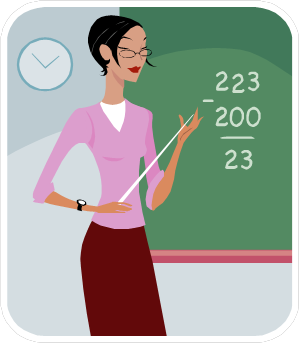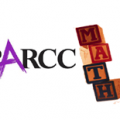Though the current iteration of the NJ ASK will not fully measure the Common Core State Standards in 2014, this “transitional” version of NJ ASK will be the bridge between the “old” assessment and the “next generation” PARCC assessment, which will be administered in the 2014-15 school year.

Last week, we looked at some of the changes between the 2013 and 2014 NJ ASK for English Language Arts – and while there are definite shifts and changes, the NJ Department of Education recognizes that these changes are of a more “subtle” nature (since many of the previously-tested skills will continue with the PARCC). Likewise, the 4th and 8th grade NJ ASK test for Science “will continue to measure the New Jersey Core Curriculum Content Standards and therefore will not change in any significant way.” However, for Mathematics, “the CCSS shifts are significant because new content will appear [in each] grade level.”
Below are some of the most significant changes and shifts that mathematics teachers should be aware of, based on the NJ DOE Executive Summary (which can be found at
www.state.nj.us/education/assessment/es/njask/NJASKPres.pdf):
For Grades 3-5:
1) The “test blueprint” has not changed, which means that no calculators are allowed for Day 1, while Day 2 is calculator-active for selected sections. In addition, the blueprint remains the same for the number of multiple choice questions (MC’s), short constructed-responses (SCR’s), and extended-constructed responses (ECR’s).
2) Because the Common Core focuses on five mathematical domains, the scoring categories on the test are broken down by domain as well. The number of points that each domain is worth varies by grade. For instance, “Operations and Algebraic Thinking” is worth the most points (14 out of 50) in third grade, while in fourth grade, “Number and Operations – Fractions” is worth the most points (18 out of 50).
3) As for manipulative use, students will be permitted to use grid paper for all test sections in math, and all three grades will be given rulers (however, they are ruled differently, with ¼” and mm rulers in third grade and 1/8” and mm rulers for fourth and fifth grades).
4) Fourth graders will receive a protractor, and fifth graders will be given a formula/conversion sheet.
5) Fourth graders will now be expected to know the area and perimeter formulas for a rectangle.
6) There will be no colored shapes for third and fourth graders.
7) Finally, students must provide units of measure on Short-Constructed Response items, and for these questions, “credit is given only for a correct answer.”
For Grades 6 – 8:
1) “No score will be reported for the Mathematical Practices” (see For Future Reference for a more detailed explanation of the Practices); however, point values on the test are categorized by the five mathematical domains.
2) New, Common Core-aligned reference sheets have been prepared for this year’s test, though the protractor and ruler will be the same as before. (You can view these reference sheets at www.state.nj.us/education/assessment/ms/5-8/ref/math.)
3) Like the elementary grades, students may use grid paper for all sections of the assessment.
4) The item counts and approximate testing times for multiple-choice questions (MC’s), short constructed-responses (SCR’s), and extended-constructed responses (ECR’s) are still the same in 2014.
For Future Reference . . .
Looking ahead to 2015, PARCC will assess the Common Core’s “Mathematical Practices.” To that end, educators have been provided with a model curriculum from the state of New Jersey that explains how to integrate these mathematical practices into instruction. The Mathematical Practices include skills such as: the ability to “reason abstractly,” make use of mathematical models, “use appropriate tools strategically,” etc.
It is important to note that it is possible for a student to demonstrate several of these Practices simultaneously, and teachers are encouraged to expect grade-appropriate levels of proficiency with them. Clearly, with each passing year students should be expected to apply the Practices with more fluency and maturity.
How to Prepare Your Students
1) Check out the state-released samples at: www.state.nj.us/education/assessment/es/njask/NJASKPres.pdf. These are broken down into samples for grades 3-5 and 6-8.
2) Practice test questions with students from their NJ ASK 2014 information/practice booklets. Also, review the information in this packet about the test itself. Answering some of the questions students may have about test items and format may help to reduce students’ anxiety.
3) Help students with time-management strategies (by modeling how to break the task down into chunks so they can map out how much time to reserve for each section).
For further information, visit:
www.state.nj.us/education/assessment/es/njask/NJASKPres.pdf.






Pingback: 8th Grade Science Curriculum Nj | Trending Today
Pingback: NJ ASK 2014: A Short Guide For Math Teachers | Think Educative